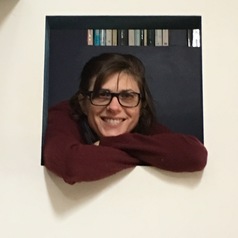august, 2019
Event Details
Two of TMT's researchers discuss their current projects: Melbourne International Expo 1880: Reloaded? Flavia Marcello, (with Ali de Kruiff, Jeni Paay, Casey
Event Details
Two of TMT’s researchers discuss their current projects:
 Melbourne International Expo 1880: Reloaded?
Melbourne International Expo 1880: Reloaded?
Flavia Marcello, (with Ali de Kruiff, Jeni Paay, Casey Dalbo)
This project tests a new methodology for fostering innovation in architectural history and design by recreating the exhibition spaces and pavilions of the Melbourne International Exhibition of 1880. In the 1870s, Melbourne made a plan to put itself and promote the fruits of its new-found economic prosperity on the world map by hosting an international expo to showcase new industrial products and the latest scientific The rooms of the UNESCO Heritage listed Exhibition are ever changing but their past iterations need to be properly documented. The project will use interaction design, VR digital technology and innovation to bring architectural history out of the pages of a book and into the realm of experience. As the pavilions of Triennale no longer exist in physical form, 3D models of these lost Pavilions will be constructed using photographs, plans, sections and descriptions available from historical documents.
 Australian Media Arts Heritage: Towards a national distributed collection
Australian Media Arts Heritage: Towards a national distributed collection
Melanie Swalwell, Prof of Digital Media Heritage
Australian artists were significant contributors to the development of media arts internationally, yet only a relatively small portion of their work has to date made it into institutional collections. This scenario is not unique to Australia but is an international problem, as Christiane Paul has explained: few media artworks have been collected by Art Museums in part because the preservation of works that contain variable media elements is perceived to be outside the understanding of a traditional twentieth-century museum and as such too difficult (2015). This is a ‘Catch 22’, as artwork that is not collected is typically not preserved, nor exhibited: writing of video art, Buttrose recently noted, “little is seen…in the Australian art collection displays in our state and national galleries” (2017), a statement that also holds for CD-ROM, net, and software art, for example. Despite the publication of important local historical surveys (Zurbrugg, 1994; Jones, 2003; Tofts, 2005), many artworks still have not been documented. We are facing the loss of cultural memory and heritage. This paper discusses a current Linkage Project that attempts to remedy this situation, following the recent transfer of two Australian media art organisations’ archives (dLux media arts, ANAT) into cultural institutions (AGNSW, State Library of SA). The project is a digital preservation and emulation project with multiple partners. The intent is to establish a best practice method for preserving Australian digital media arts heritage, to lay the groundwork for digitisation and imaging at scale, and to work towards a distributed national collection. Whilst partners’ imperatives vary, the project team are cognisant of going beyond simply re-creating or displaying artworks, important though that is. Also significant are documenting changing processes in the development of artworks, being able to trace an intellectual lineage, and securing archives that will be the basis for future scholarship.
Time
(Thursday) 3:30 pm - 5:00 pm
Location
ATC205, Swinburne University of Technology
Burwood Road


No comment yet, add your voice below!